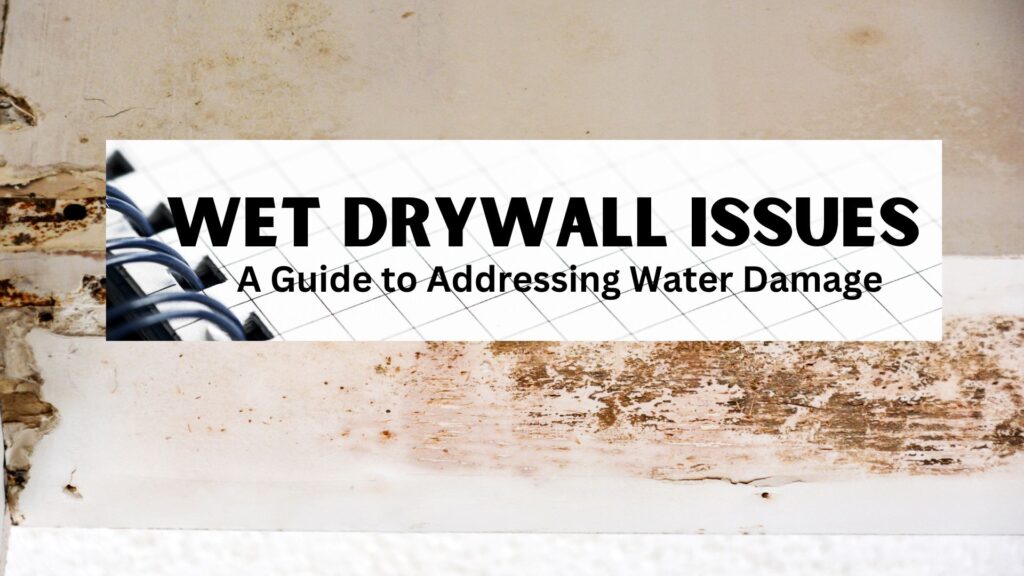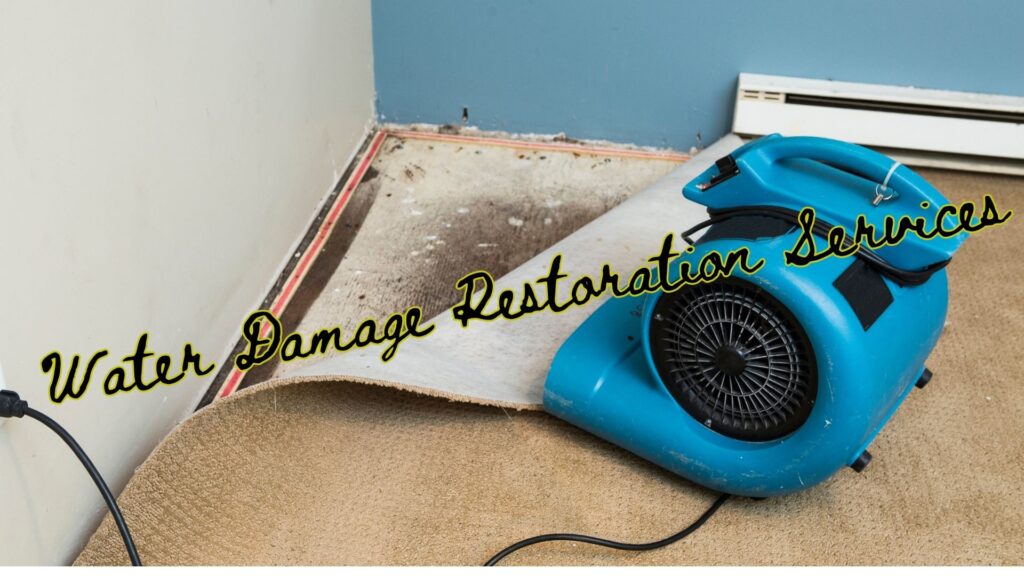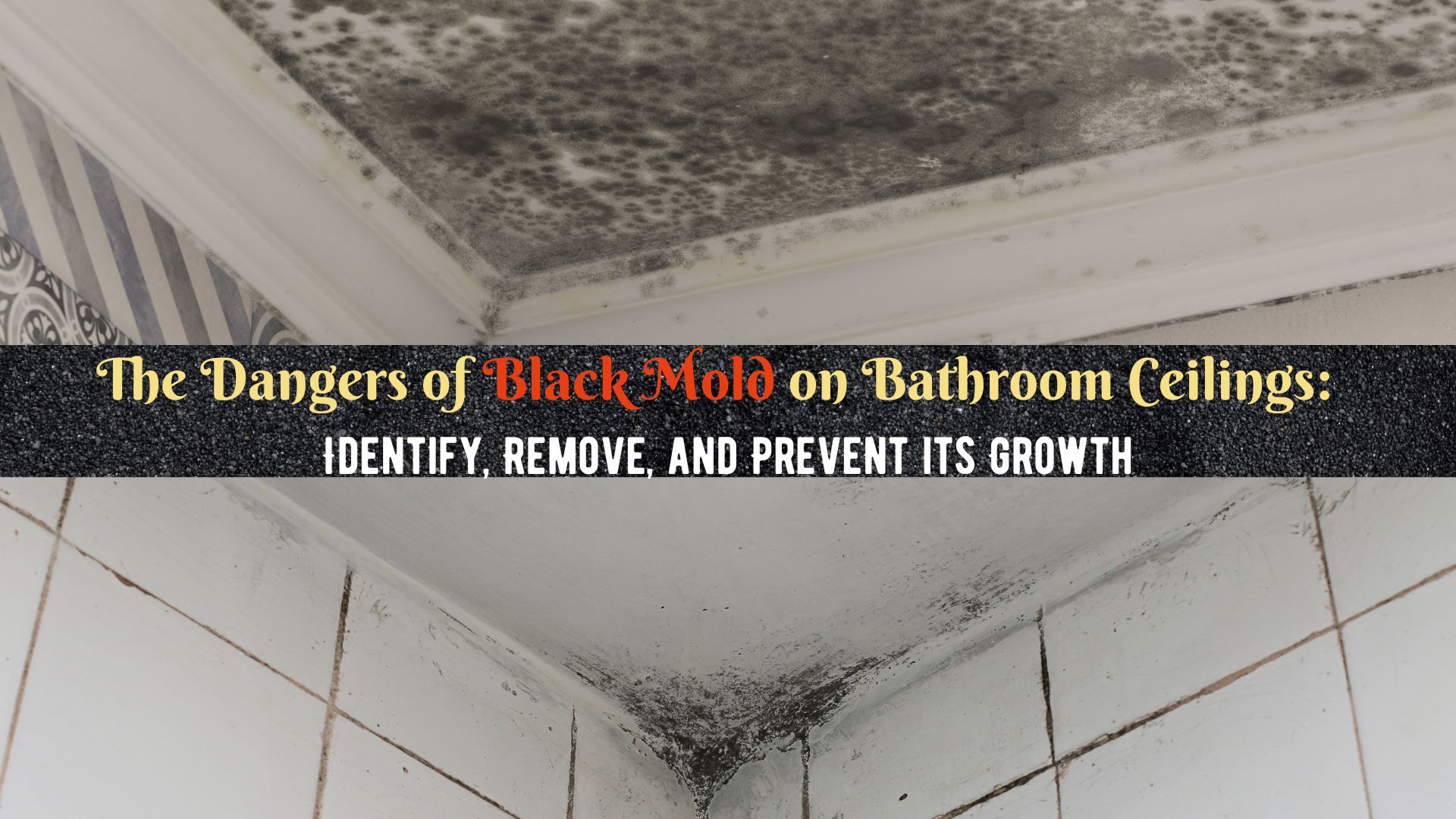Discovering wet drywall in your home can be a distressing situation, especially when it involves damaged walls, drywall ceilings, and wet insulation. Whether it’s due to a leaky roof, plumbing issues, or flooding, water intrusion can lead to significant problems and potential hazards. In this comprehensive guide, we will explore the necessary steps to address the challenges presented by wet drywall, including repairing damaged walls, addressing drywall ceilings, and dealing with wet insulation caused by ceiling water damage. By following these guidelines, you can effectively mitigate the effects of water damage and restore your home to its former state.
Wet Drywall: Signs of Water Damage and Assessing the Extent of the Damage
Water damage can wreak havoc on your home, particularly on materials like drywall. When the drywall is exposed to water, it can lose its structural integrity, leading to weakened walls and ceilings. In addition, wet drywall provides the perfect environment for mold growth, which can further deteriorate your home and pose health risks. In this article, we will explore the signs of water damage, how to assess the extent of the damage, and the necessary steps for repairing and restoring water-damaged drywall.
Identifying Signs of Water Damage When You Have Wet Drywall
Recognizing the signs of water damage is crucial in preventing and addressing wet drywall issues effectively. Early identification allows homeowners to take prompt action, mitigating the potential consequences of prolonged exposure to moisture. By paying attention to signs such as discoloration, peeling paint, sagging areas, musty odors, or mold clusters, homeowners can identify and address water intrusion sources, preventing further damage to the drywall and potential structural issues.
Timely intervention not only saves on costly repairs but also helps maintain a healthy living environment by minimizing the risk of mold growth and preserving the integrity of the home’s structural components. Stay vigilant and address water damage promptly to safeguard your home from the damaging effects of wet drywall.
Before you can take action, it’s essential to identify the signs of water damage. Some common indicators include:
1. Discoloration: Water that seeps into drywall can cause stains to appear on walls or ceilings. These stains often appear yellowish or brownish in color due to the water absorbing dirt or other contaminants as it travels through the building materials.
2. Peeling or bubbling paint: When water infiltrates the wall behind a painted surface, it can cause the paint to lose its adhesion and peel or bubble. This occurs because the moisture disrupts the bond between the paint and the underlying surface.
3. Sagging or warping: Drywall is made of gypsum, a material that can lose its structural integrity when exposed to excessive moisture. As water saturates the drywall, it becomes weakened, leading to sagging or warping. This can result in noticeable bulges or irregularities on the affected surface.
4. Musty odors: The presence of water damage often creates a favorable environment for mold growth. Mold thrives in damp conditions, and its growth produces a distinct musty odor. If you detect a persistent, earthy smell, it may indicate the presence of mold resulting from water damage.
5. Mold clusters: When water damage persists or goes unnoticed, it can lead to mold growth. Mold often appears as visible clusters or patches on walls, ceilings, or other affected surfaces. It can range in color, including black, green, or white, and has a fuzzy or slimy texture.
What to Do When You Have Wet Drywall
Assessing the Extent of the Damage
Once you have noticed signs of water damage in your home, it is important to assess the extent of the problem before starting any repairs. This step is crucial because it helps you understand the severity of the damage and enables you to take appropriate actions to prevent further issues. Here are some methods you can use to assess the extent of water damage:
- Touch the drywall: Gently press the affected areas of the drywall with your hand. If the drywall feels soft, spongy, or wet to the touch, it indicates a high moisture content. This suggests that water has likely penetrated the drywall and may have caused damage to the underlying structure.
- Use a penetrating moisture meter: A moisture meter is a useful tool that can measure the moisture levels in materials such as drywall. It works by sending electrical signals into the material and measuring the resistance, which provides an indication of the moisture content. By using a penetrating moisture meter on the affected drywall, you can get more accurate readings of the moisture levels and identify areas with excessive moisture.
- Check adjacent areas: Water can travel through walls, floors, and ceilings, so it’s important to inspect nearby areas for signs of water damage. Look for stains, discoloration, or bulging in adjacent walls, as these can indicate that water has spread beyond the initially visible area. Also, check the floors and ceilings below or above the affected area to see if there are any signs of water damage, such as sagging or water stains.
By employing these assessment methods, you can gain a better understanding of the extent of the water damage. This information will help you make informed decisions about the necessary repairs and remediation steps. It’s worth noting that if you’re dealing with extensive water damage or are unsure about the assessment process, it’s advisable to consult with a professional water damage restoration service. They have the expertise and equipment to accurately assess the damage and recommend appropriate solutions.
Repairing Water-Damaged Drywall
Depending on the severity of the water damage, you may need to follow different approaches to repair your drywall. Here a.0re the general steps to take:
- Ensure safety: Before beginning any repairs, ensure that the source of water causing the damage has been addressed, and there is no risk of further water intrusion.
- Protect yourself: Wear protective gear, including gloves, goggles, and a dust mask, to safeguard against potential mold exposure.
- Remove damaged materials: Carefully remove the affected drywall, insulation, and any other damaged materials to prevent mold growth and promote proper drying.
- Dry the area: Use dehumidifiers, fans, and open windows to facilitate air circulation and aid in drying out the space thoroughly. Ensure the area is completely dry before proceeding with repairs.
- Treat for mold: If mold is present, consult a professional for safe and effective mold remediation to prevent further contamination.
- Replace water-damaged drywall: Once the area is dry and mold-free, install new drywall. Cut the replacement piece to fit, secure it in place, and finish with joint compound and paint to match the surrounding area.
- Monitor for future issues: Regularly inspect your home for any signs of water damage or leaks to address them promptly and prevent future problems.
Seeking Professional Water Damage Restoration
In cases of extensive water damage or when dealing with significant mold growth, it is advisable to seek professional water damage restoration services like Superior Restoration. Professionals have the expertise, equipment, and knowledge to handle complex situations, ensuring thorough restoration and minimizing the risk of further damage or health hazards.
In conclusion, water damage can cause severe harm to your home, particularly to materials like drywall. By recognizing the signs of water damage, assessing the extent of the problem, and taking appropriate measures for repair and restoration, you can mitigate the impact of water damage and restore your home to its former condition. Remember to prioritize safety, address the source of water intrusion, and consider professional assistance when necessary to ensure the best possible outcome.
Contact our local office today, Water Damage Corona. We’ll gladly assist with your water, mold, and fire damage concerns 24/7.






